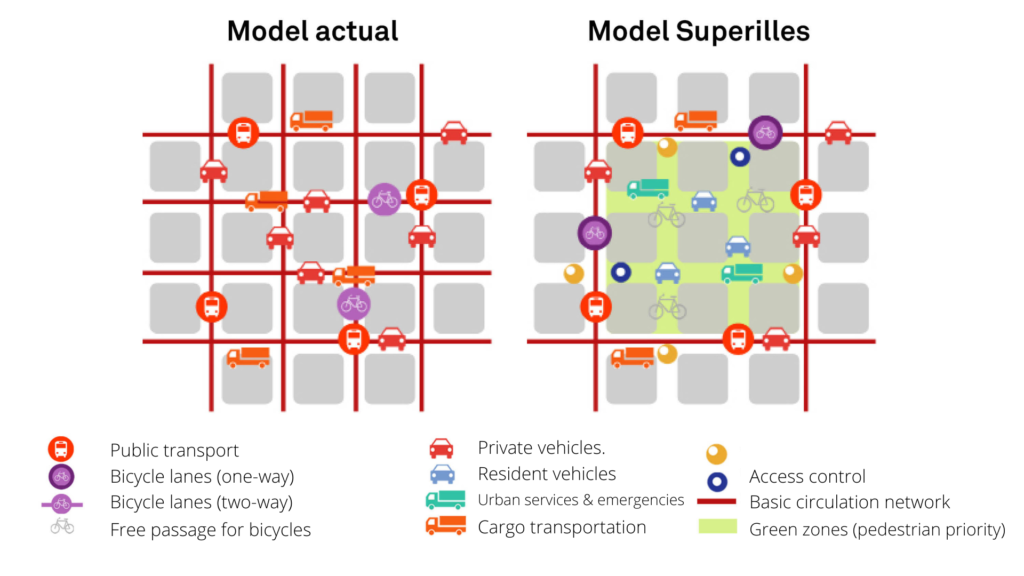Barcelona’s Superblocks, Explained
How Spain Is Changing The Face Of Urban Development.
The modern world is addicted to cars, looking at any modern city, you can see that the grid plan is dominated by infrastructure for cars, whether it be roads, parking lots, driveways etc. If you ever walk around a city, you’ll find that you are confined to narrow sidewalks, dangerous bike paths, and are constantly waiting at intersections.
Barcelona, Spain has these problem in spades. Barcelona has some of the worst air pollution in Europe, causing roughly 3,500 deaths a year. The cause of this air pollution is Barcelona’s abundance of cars, its streets aren’t very friendly to pedestrians, as a majority of its roadways are specifically designed for cars. To deal with this problem, the city created an extensive urban mobility plan to reduce traffic. The most interesting part of this urban planning initiative, was the Superillas, which translates to superblocks in English.

Superblocks are a fairly simple concept; Take a chunk of land 3 block by 3 blocks, and limit the speed of cars to 10 kilometers per hour in the interior, while routing vehicles like trucks and buses around it. (Shown the image above). This makes the interior streets of the superblock very easy to navigate by pedestrians, as they don’t have to worry about being hit by cars. It gives more street space to the community, which can be used for outdoor games, events, festivals, greenspaces, and parks.. The concept of the Superblock is being tested in five neighborhoods, but the committee has identified 120 possible areas that superblocks can be implemented in. Now, this idea may seem good, but it has been met with some protest. People have complained that the superblocks have made driving to their homes very difficult, as they have to go very slow and wait for pedestrians. However, that’s kind of the point. Superblocks were made to encourage people to switch to cleaner forms of transport by making the traditional option of driving harder and less efficient.

With the construction of these Superilles, space that is currently taken up by traffic will be recovered for Barcelona residents. This will produce a public area that are safer, greener, and healthier. There will be more room for walkers, bicycles, and public transportation as a result of the urban makeover. The streets will have greater room for public usage, be safer, and be more easily accessible.
In 1993, a superblock was built close to the Basilica of Santa Maria del Mar in Barcelona. Pilot projects were started in 2014, and there was a noticeable rise in the number of journeys made by bikes and walkers. Six completely functional superblocks have been implemented throughout Barcelona since 2016 in various locations.
Related Articles/Videos:
https://www.citiesforum.org/news/superblock-superilla-barcelona-a-city-redefined/
https://www.bloomberg.com/news/articles/2020-11-11/barcelona-s-new-car-free-superblock-will-be-big











